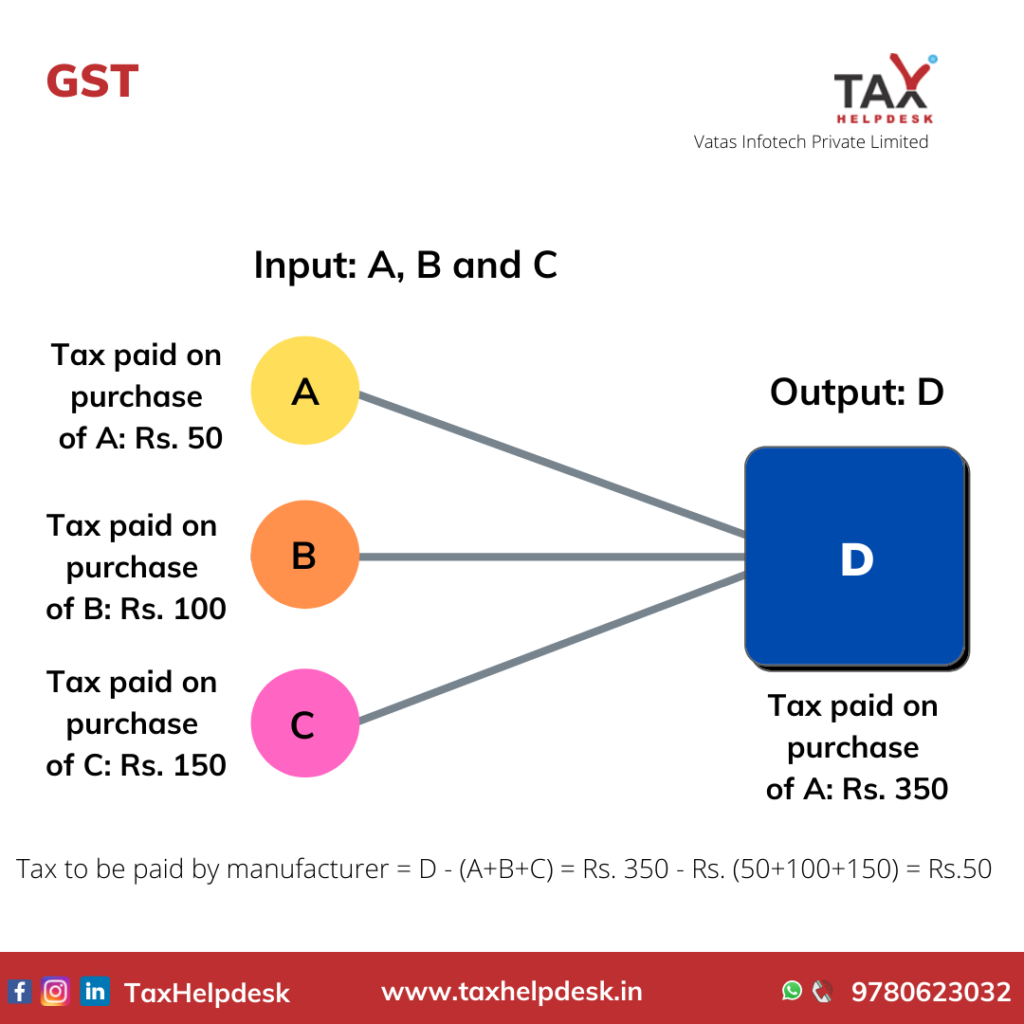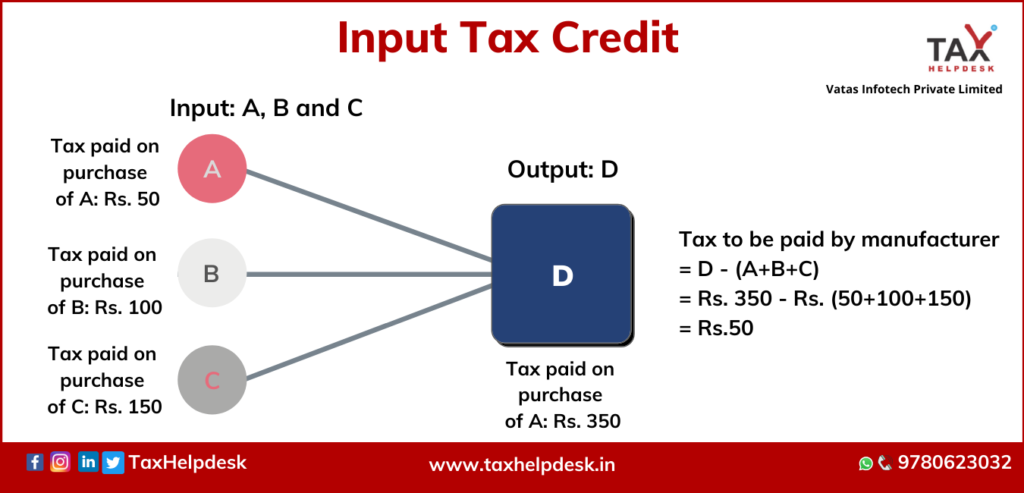Before the advent of the Goods and Services Tax regime, the indirect tax regime comprised of service tax, central excise, VAT and other related taxes. Under the old indirect tax regime, the credit mechanism for service tax and central excise duty was levied by the Union Government and by the State Government under their respective VAT laws. These VAT legislations allowed Input Tax Credit of VAT on inputs and capital goods in transactions within the State, but not on inputs and capital goods coming in the State from outside the State, on which the central tax was paid. CENVAT Credit Rules, 2004 allowed the availing and utilization of credit of duty/tax paid on both goods (capital goods and inputs) and services by the manufacturers and service providers across the country.
CENVAT Credit Rules, 2004 integrated the credit across the goods and services, to mitigate the cascading effects of the central levies namely, central excise duty and service tax. However, the credit chain remained fragmented on account of State level VAT as the credit of central taxes could not be set off against a State levy and vice versa. This led to cascading of taxes, leading to increase in costs of goods and services.
The introduction of GST assured seamless credit on goods and services across the entire supply chain. Input Tax Credit is considered to be the lifeline of the GST regime. The provisions of Goods and services tax essentially makes GST a value added tax i.e., collection of tax at all points of supply chain after allowing credit of tax paid at earlier points.
What is Input Tax?
As per the provisions of GST Act, input tax in relation to a registered person, means the Central tax, State tax and Integrated tax charged on any supply of goods or services or both. This tax is charged in furtherance of the business and includes such tax payable on reverse charge basis— but excludes tax paid under composition levy.
What is Input Tax Credit?
Input Tax Credit means that at the time of paying taxes on the output, the taxpayer can reduce the tax amount already paid on inputs.

Need of Input Tax Credit
The need of Input Tax Credit was emerged to avoid the double taxation which was imposed on purchasing of the goods as well as on the sale of the final output. So to avoid the cascading effect of the taxes, ITC was essential.
Input Tax Credit under GST is a credit which is available to supplier to set off the tax he has paid on purchase of goods from output tax on sale of such goods. Hence, the tax will levy on the value added which results in avoiding double taxation.
Eligibility Criteria to avail Input Tax Credit
In order to avail Input Tax Credit, the taxpayer must qualify in the following:
Registration
under GST
Goods or services are used for business purposes
How to avail Input Tax Credit?
In order to avail Input Tax Credit, the taxpayer must possess either of the following:
Possession of tax paying document
Receipts of the Goods and/or services
Tax leviable on supply actually paid to the Government
Filling of GST Returns
NOTE:
– If the goods covered in an invoice are received in lots, then the Input Tax Credit can be taken only at the receipt of the last lot/instalment.
– The registered person must pay to the supplier, the value of the goods and/or services along with the tax within 180 days from the date of issue of invoice.
– If the depreciation has been claimed on tax component, then the taxpayer cannot claim Input Tax Credit.
Apportionment of Input Tax Credit
There can be two situations where Input Tax Credit may be needed to apportioned:
When the goods and/or services are used by the registered person partly for the purpose of the business and partly for the other purposes.
When the goods and/or services are used by the registered person partly for making taxable supplies including zero rated supplies and partly for making tax exempt supplies.
In both the above situations, full Input Tax Credit on inward supplies cannot be allowed. Only proportionate credit can be taken. Where the goods and/or services are used partly for non business purposes and partly for business purposes, the Input Tax Credit can be taken only with respect to business purposes.
In the latter case, where the goods or/and services are used by the registered person partly for effecting taxable supplies including zero-rated supplies and partly for effecting exempt supplies, the amount of Input Tax Credit shall be restricted to so much of the input tax as is attributable to the said taxable supplies including zero-rated supplies. No Input Tax Credit can be availed against tax exempted supplies.
Frequently Asked Queries
What is Reverse Charge Mechanism?
Reverse Charge Mechanism (RCM) means that the GST is to be paid and deposited with the Govt by the recipient of goods and/or Services and not by the supplier of goods and/or services.
Can a person take input tax credit without payment of consideration for the supply along with tax to the supplier?
Yes, the recipient can take ITC. However, he is required to pay the consideration along with tax within 180 days from the date of issuance of invoice. This condition is not applicable where tax is payable on reverse charge basis.
What would happen of the ITC taken by the registered person if he has not paid the consideration along with tax within 180 days from the date of issue of invoice?
The amount of ITC would be added to output tax liability of the person. He would also be required to pay the interest amount. However, he can take ITC again on payment of consideration and tax.
Is there any time period within which the credit has to be claimed?
No, there is no time period to avail the credit. The recipient is required to pay the consideration along with tax within 180 days from the date of issuance of invoice.
Who will get the ITC where goods have been delivered to a person other than taxable person?
It would be deemed that the registered person has received the goods when the goods have been delivered to a third party on the direction of such taxable person. So ITC will be available to the person on whose order the goods are delivered to third person.
Sometimes goods are destroyed or lost due to various reasons? Can a person take ITC on such goods?
No, a person cannot take ITC with respect to goods lost, stolen, destroyed or written off. In addition to this, ITC with respect of goods given as gifts or free samples are also not allowed. [Section 17(5)(h) of CGST Act]



Pingback: How does Input Tax Credit Work? | TaxHelpdesk
Pingback: Inspection, Search, Seizure & Arrest under GST | TaxHelpdesk
Pingback: Rules related to setting off of Input Tax Credit | TaxHelpdesk
Pingback: Various Types of Supply Under GST | TaxHelpdesk